Fiberglass Windows: A Sustainable Choice in Non-Residential and Multi-Family Buildings
Mullion and Grille Options
Once a window type is selected for use in a building, a common next step is to determine how to group them within the design. Accordingly, fiberglass window manufacturers have offered a variety of options on how to combine multiple units together using mullions or how to subdivide larger units using grilles. Some of the common choices are demonstrated as follows:
- Integral mullion. Two or more units can be combined together with an integral fiberglass mullion that matches the rest of the window unit. In cases that require it, steel can be added to stiffen large units against wind or other loads. (See Figure 7.)
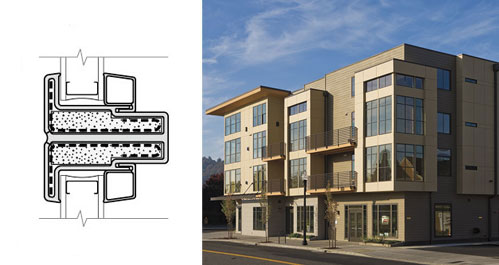 |
Figure 7: Integral mullions allow multiple fiberglass windows to be installed together in a common frame. Optional steel reinforcement shown by dashed lines. Images courtesy of Pella Corporation |
- Reinforcing mullions. Where structural conditions warrant it, fiberglass windows can be fabricated with a central mullion that will reinforce the unit and help it resist imposed loads. This larger mullion may have positive design implications in terms of the way the trim pieces accentuate the overall appearance of the façade. (See Figure 8.)
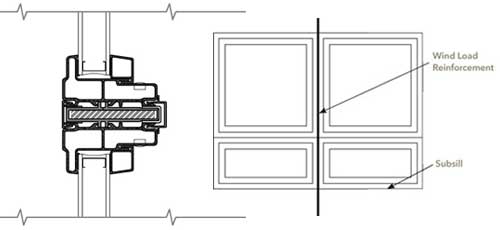 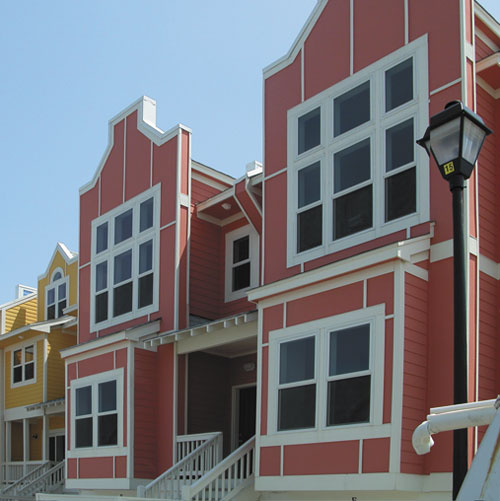 |
Figure 8: Reinforcing mullions are used where structural forces of wind load and or size dictate their need. Images courtesy of Pella Corporation |
- Grilles-between-the-glass. As with other styles of windows, grilles-between-the-glass, also known as integral muntins, may be placed between the glass panes to provide the look of divided lights. (See Figure 9.)
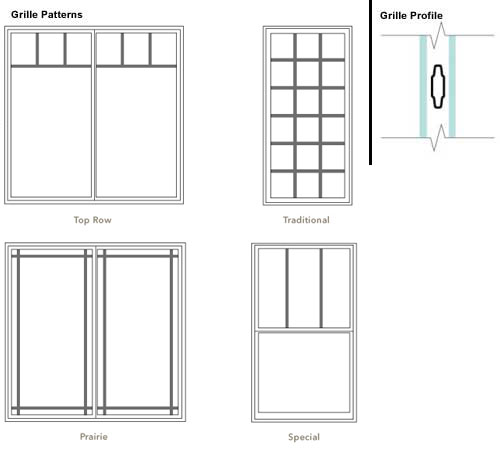 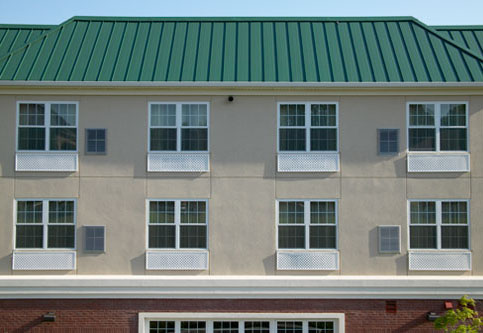 |
Figure 9: Grilles or muntins can be located between the glazing layers to create a desired appearance, maintain energy efficiency, and make cleaning easier. Images courtesy of Pella Corporation |
- Applied Grilles. Another way to subdivide the glass is through the use of applied grilles. Since they can match the frame in size and color, they can be used to provide the look of multiple windows or aluminum storefront. They are typically adhered to both the exterior and interior faces of the glass for a similar appearance on both sides. The width of the applied grille can be the same as the frame, to provide a clean, commercial look. The color typically matches the frame on both sides and multiple grille patterns are available. (See Figure 10.)
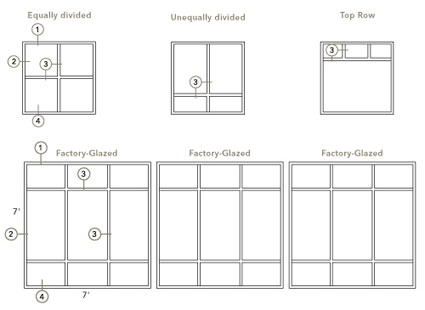 |
 |
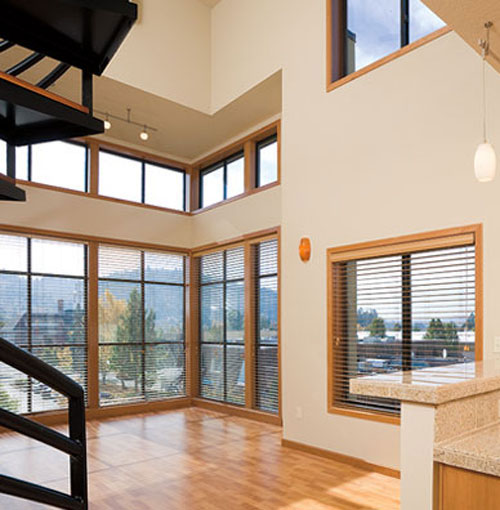 |
|
Figure 10: Fixed frames with grilles or muntins applied to the inside and outside of the glazing are economical and provide great flexibility in subdividing the glass. Images courtesy of Pella Corporation |
|









